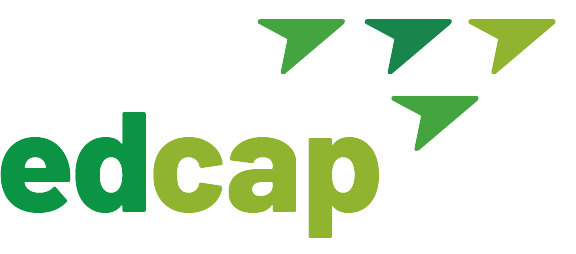What are the consequences of default?
Missing payments for 270+ days (9 months) triggers default. The government can then seize tax refunds, garnish wages, and reduce benefits—without court action. Federal loans have no statute of limitations, so this can continue for life. Talk to your servicer before it gets this far.
Experiencing Garnishments or Offsets?
Learn more about wage garnishment, federal benefit and tax refund offsets, and steps you can take to stop them.
How do I prevent default?
You can prevent default by doing the following:
- Enroll in an Income-Driven Repayment (IDR) plan. Your payment will be based on your income. This means that if you have no income, your payment can be as low as $0 and your loans will not go into default. You can apply for an IDR plan online.
- Request a deferment or forbearance. This will temporarily postpone your payments.
Caution: Your student loan servicer may give you a forbearance on the spot, but if your situation is not temporary, it may be best to enroll in an IDR Plan.
To exit default, you have two options:
- Rehabilitation: Make 9 on-time monthly payments over 10 months. Start by calling your debt collector—check studentaid.gov to find out who that is.
- Consolidation: Apply at studentaid.gov/loan-consolidation to pay off your defaulted loan with a new one. You’ll then repay under new terms.
Caution: You can only rehabilitate once. Understand the impact of consolidation before choosing. Get help to pick the best option for your situation.
Rehabilitation vs. Consolidation: How to Choose
It depends on your situation:
- Rehabilitation removes the default mark from your credit report (but not prior delinquencies), which may help if you’re applying for a mortgage or other loans.
- ⚠️ Caution: You can only rehabilitate once.
- Consolidation is faster, simpler, and can be done online—often resolving default in 4–8 weeks. It’s a good option if you’re short on time and want to protect your next tax refund or need financial aid to return to school. However, it doesn’t remove default or delinquency history from your credit report.
- ⚠️ Warning: Consolidation resets progress toward IDR forgiveness.
Consolidation Walkthrough Tutorial
If you decide consolidation is your best option, watch this video with step-by-step instructions.
What’s next?
Communicate with your servicer before you default. Enrolling in an Income Driven Repayment plan may be the best short- and long-term solution. If you have defaulted, get help. You will need a plan to get out and stay out of default.
Tip: Don’t ignore your student loans. There are many repayment options available. If you have no income because you don’t have a job, your monthly payment can be as low as $0. Enrolling in a repayment plan can prevent you from defaulting and negatively impacting your credit or subjecting yourself to involuntary collections.
FAQs
Federal Student Loan Consolidation FAQs
Q: What is federal loan consolidation, and how does it work?
A: Consolidation lets you combine one or more federal student loans into a single new loan called a Direct Consolidation Loan. This new loan pays off your old ones, giving you one monthly payment and one servicer.
Q: Can consolidation help me get out of default?
A: Yes. Consolidation is one of the fastest ways to get out of default. You’ll need to either:
- Agree to repay the new loan under an income-driven repayment (IDR) plan, or
- Make three consecutive, voluntary, on-time payments on the defaulted loan before consolidating. Once approved, your new loan will be in good standing.
Q: What are the benefits of consolidating my loans?
A: Consolidation can:
- Get you out of default quickly
- Combine multiple loans into one payment
- Restore eligibility for income-driven repayment plans and forgiveness programs
- Help you qualify for new federal aid if you plan to go back to school
Q: Are there any downsides or risks to consolidating?
A: Yes—there can be.
- You might lose credit toward forgiveness if you’ve already made qualifying payments.
- Your new loan could reset your progress toward forgiveness.
- After July 1, 2026, consolidation options will become more limited—some older loans may only qualify for two repayment plans.
- Always review your situation before consolidating.
Q: Will consolidation lower my interest rate?
A: Not exactly. Your new interest rate is a weighted average of your current loan rates, rounded up slightly. That means consolidation won’t lower your rate—but it will simplify your payments.
Q: How does consolidation affect loan forgiveness programs like PSLF or IDR forgiveness?
A: Consolidation can restart your forgiveness clock because it creates a new loan. However, if you consolidate during certain Department of Education adjustment periods, your prior qualifying payments may still count. Check current updates before you consolidate.
Q: Can I consolidate both federal and private loans together?
A: No. Federal consolidation is only for federal loans. If you want to combine private loans—or mix private with federal—you’d have to refinance with a private lender, but doing that means losing federal protections and forgiveness options.
Q: What’s the difference between consolidation and refinancing?
A: Consolidation: Done through the U.S. Department of Education. Keeps your federal benefits and repayment options.
Refinancing: Done through a private lender. Might lower your rate but removes all federal benefits (like IDR, deferment, and forgiveness).
Q: When is the best time to consolidate?
A: That depends on your goals. Consolidation can help if you’re:
- In default and need to restore eligibility.
- Managing multiple servicers or payments.
But it may not be best if you’re close to forgiveness or currently benefiting from special programs. When in doubt, talk to a loan counselor before applying.
Q: How do I apply for consolidation, and how long does it take?
A: You can apply for free at studentaid.gov:
- Log in with your FSA ID
- Select “Consolidate My Loans”
- Choose your repayment plan (IDR plans are usually best)
- Submit your application
It usually takes 30–90 days for processing. Once approved, you’ll make payments on your new, consolidated loan.
Federal Student Loan Rehabilitation FAQs
Q: What is loan rehabilitation?
A: Loan rehabilitation is a program that helps you get your federal student loan out of default. You agree to make a set number of affordable monthly payments based on your income and expenses. After successfully completing the program, your loan is no longer in default.
Q: How many payments do I have to make?
A: You must make nine monthly payments within ten consecutive months. Each payment must be made on time—within 20 days of the due date.
Q: How much will my payments be?
A: Your payments are based on your income and family size. Most borrowers qualify for low, affordable amounts, sometimes as little as $5 a month if your income is very limited.
Q: What happens after I finish rehabilitation?
A: Once you make all nine payments:
- Your loan is no longer in default.
- The default status is removed from your credit report.
- You regain eligibility for federal aid, repayment plans, and forgiveness programs.
Your loan will then be transferred to a new loan servicer for regular repayment.
Q: Does rehabilitation erase my credit history?
A: Not entirely. The default mark is removed from your credit report, but the late payments made before default will still appear. Over time, however, your new on-time payment record can help improve your credit.
Q: Can I rehabilitate a loan more than once?
A: No. You can only rehabilitate a loan one time. If you default again afterward, you’ll have to use a different method—like consolidation—to get out of default.
Q: What’s the difference between rehabilitation and consolidation?
A: Rehabilitation removes the default from your credit report and helps rebuild credit, but it takes about 10 months.
Consolidation gets you out of default faster—often within weeks—but the default stays on your credit report.
The best option depends on your goals and timeline.
Q: Can my wages still be garnished during rehabilitation?
A: If your wages are already being garnished, the garnishment will continue until you make five successful rehabilitation payments. After that, the garnishment should stop, and you’ll continue making your agreed payments.
Q: How do I start the rehabilitation process?
A:
- Contact your loan holder or servicer and ask to start rehabilitation.
- Provide proof of income (like pay stubs or tax returns).
- Agree on a monthly payment amount.
- Start making your nine on-time payments.
You can find your loan holder at studentaid.gov by logging in with your FSA ID.
Q: Is rehabilitation the right choice for me?
A: Rehabilitation is a great option if you want to:
- Improve your credit
- Remove the default from your report
- Regain eligibility for federal aid
However, if you need to get out of default quickly—for example, before tax season or to apply for new aid—consolidation might be a better fit. It’s smart to speak with a student loan counselor before deciding.








